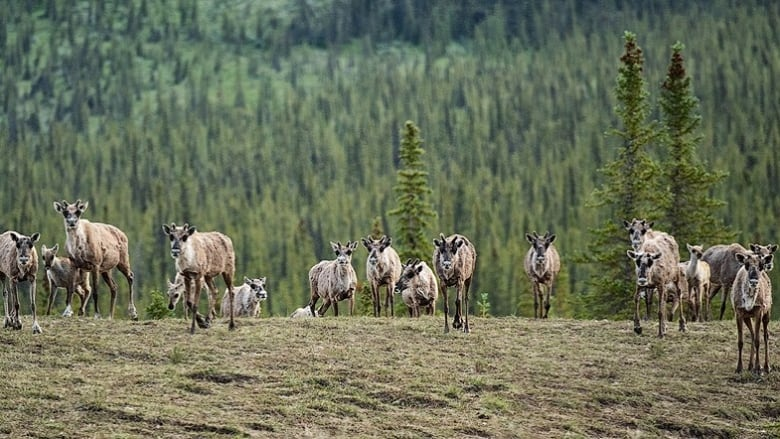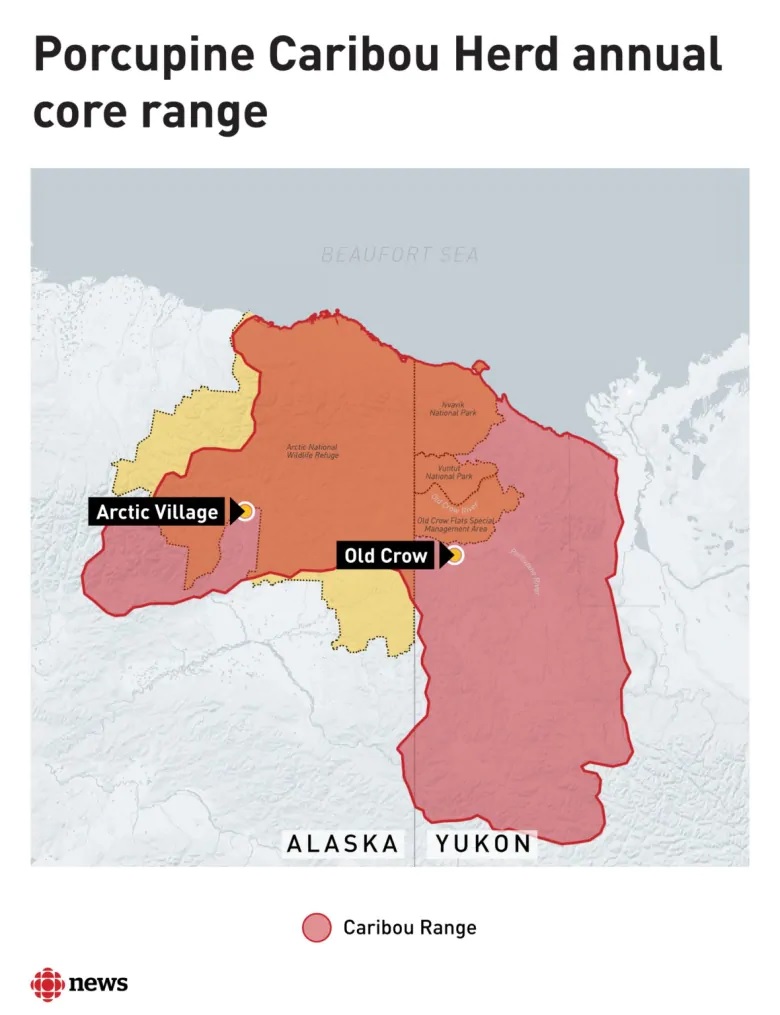Indigenous groups in Northern Canada celebrate Porcupine caribou agreement

People from eight Indigenous communities are celebrating a groundbreaking collaboration agreement on how they will share the harvest of the caribou herd upon which they all rely.
“It’s been a long time coming,” said Gwich’in Tribal Council vice-president and Deputy Grand Chief Jordan Peterson, 32, at a community celebration in Inuvik, Northwest Territories last week. “The discussion around this specific topic has been around as long as I’ve been alive.”
The Porcupine Caribou Native User Agreement sets out how Indigenous groups who use the herd will share the harvest when the number of caribou is low, or the herd bypasses a community.
“The most important part of the Native User Agreement is that it provides for certainty … a collaborative process for the communities to come together to share the allowable harvest … should that time ever come,” said Trondëk Hwëch’in Chief Roberta Joseph.
Representatives from the Inuvialuit Game Council and Gwich’in Tribal Council in the N.W.T., as well as Yukon First Nations Na-cho Nyak Dun, Tr’ondëk Hwëch’in and Vuntut Gwitchin were in Inuvik for the celebrations, which included a community feast, music and an old-time dance.
Herd population currently healthy
Porcupine caribou range from their calving grounds in Alaska, through northern Yukon and then to their habitual winter grounds in the Northwest Territories. Their disregard for man-made borders has mired agreements over how to manage and protect the herd in a significant amount of bureaucratic red tape.
This native user agreement has been in the works since 1985, when the Porcupine Caribou Harvest Management Agreement was signed. The plan lays how groups should harvest the animal if the health of the herd begins to deteriorate.
The herd’s population has shifted between 100,000 and 200,000 animals since the first aerial census in 1970. The current population is estimated at 205,000 animals.

Harvesting is currently in the “green zone” — at more than 115,000 animals, with no harvest limit for Indigenous hunters, and a two-bull limit for licensed non-Indigenous hunters. When the herd is in the “yellow zone” — between 115,000 and 80,000 animals — Indigenous hunters are asked to adhere to a voluntary, bulls-only harvest to leave more cows to calve.
Things would get more complicated if the population were to fall below 80,000 animals into the orange and red zones. The eight Gwich’in and Inuvialuit communities within the herd’s range in the N.W.T. and Yukon rely on the herd as a food source. Decisions would have to be made on how many animals to harvest in order to strike a balance between food security and allowing the herd to recover.
“While the caribou are in a healthy state, we thought it would be the best time to [finish this agreement] and it would be the easiest time. That way, everybody is a little more level-headed,” said Billy Store, who represents the Inuvialuit Game Council on the new commission that came with the agreement. He has also represented the Inuvialuit Game Council on the Porcupine Caribou Management Board for 15 years.
The Porcupine Caribou Native User Agreement is a good-faith agreement, and a living document, which Store sees as a good thing.
“We don’t see everything in the future, we don’t know what’s going to happen,” he said. “This agreement, it’s a living thing, it could be changed as long as it’s done with everybody at the table.”
A new threat: Alaska opens calving range to oil and gas
While the herd’s population is currently healthy, the animals are facing a new risk from the U.S. government.
The Alaska Bureau of Land Management has begun the process of leasing out areas within the herd’s calving grounds for oil and gas development. The area is within the Arctic National Wildlife Refuge (ANWR), established in 1980. In 2017, the Republican-controlled U.S. House and Senate passed a budget provision that opened up half of the 1.5 million acres in question to oil and gas development.
The vast majority of Porcupine caribou take refuge in the coastal plains in ANWR through spring and summer to birth and raise their young in an environment free from the hoards of insects and other predators.
“For me as an individual Gwich’in … we try to make the decisions that are going to protect everyone’s rights or interests,” said Peterson.
“This [agreement] is one step in that fight and we still have a lot to do in terms of the United States government and the protection of the National Arctic Wildlife Refuge, and the calving grounds of the Porcupine caribou.”
With files from Wanda McLeod
Related stories from around the North:
Canada: Caribou crossing Arctic Canada highway, but hunters asked to hold off for now, CBC News
Finland: Sámi youth oppose proposed Arctic rail line in northern Finland, Yle News
Norway: “The ‘Smart Arctic’ is Indigenous,” Saami leader tells Arctic Frontiers, The Independent Barents Observer
Russia: Authorities in northwest Russia move to protect wild reindeer, The Independent Barents Observer
Sweden: Indigenous reindeer herders request emergency aid after drought, wildfires ravage Sweden, Eye on the Arctic
United States: Bill to protect ANWR passes early hurdle in Washington, CBC News



